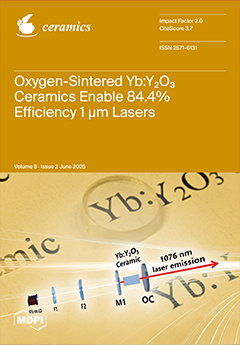In recent years, climate change has attracted the attention of the scientific community. These changes are attributed to human action, which is responsible for the emission of polluting gases, mainly through the burning of fossil fuels, deforestation, and industrial processes that are responsible for the greenhouse effect. Post-combustion CO
2 capture using solid adsorbents is a technology that is currently gaining prominence as an alternative and viable form of capture to other industrial processes used. Zeolites are adsorbents capable of capturing CO
2 selectively due to their properties such as textural properties, high surface area, and active sites. In this context, this work developed materials with a zeolite structure with an alternative low-cost silica source from beach sand, called MPI silica, to make the process eco-friendly. Crystallization time studies were carried out for materials containing MFI-type zeolites with MPI silica with a time of 15 h (ZM 15 h) and 3 days (SM 3 d), with relative crystallinities of 92.90% and 111.90%, respectively. The synthesized materials were characterized by several techniques such as X-ray diffraction (XRD), X-ray fluorescence (XRF), the textural analysis of N
2 adsorption/desorption isotherms, absorption spectroscopy in the infrared region with Fourier transform (FTIR), scanning electron microscopy (SEM), and thermal analysis. The evaluation of the experimental adsorption isotherms showed that the best results were for the zeolites synthesized in the basic medium, namely ZMP 3 d, ZM 10.5 h, and ZM 15 h, with capacities of 3.72, 3.10, and 3.22 mmol/g of CO
2, respectively, and in the hydrofluoric medium, namely SP 9 d, SM 3 d, and SM 6 d, with capacities of 3.94, 3.78, and 3.60 mmol/g of CO
2, respectively. The evaluation of the mathematical models indicated that the zeolites in the basic medium best fitted the Freündlich model, namely ZMP 3 d, ZM 10.5 h, and ZM 15 h, with capacities of 2.56, 1.68, and 1.87 mmol/g of CO
2, respectively. The zeolites in the hydrofluoric medium are adjusted to the Langmuir model (SP 9 d and SM 3 d) and Temkin model (SM 6 d), with capacities of 3.79, 2.23, and 2.11 mmol/g of CO
2, respectively.
Full article





